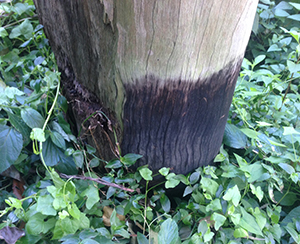Creosote treated timber
Creosote is one of the oldest forms of timber preservative. It is derived from coal or wood, contains more than 300 chemicals and is characterised by its dark, tar-coloured appearance and distinctive smell. It is only used outdoors as it can harm human health if used indoors.

Pigment emulsified creosote (PEC) is a modern derivative, with water and pigments added to
- stabilise the creosote by locking it into the timber
- make it less pungent
- reduce leaching
Hazard level of timber treated with creosote: H6.
Pests repelled by creosote: Severe to very severe decay, borers and termites, and marine wood borers.
Typical uses of creosote: Creosote is not available for domestic use in Australia. It is only used for commercial outdoor applications in the ground or in fresh water and seawater such as
- power poles
- vineyard poles
- farm fencing
In NSW it is mainly used in conjunction with copper chrome arsenate treated timber to treat marine piles.
Safe handling
- Avoid skin contact with creosote either in its liquid form or as sawdust because when exposed to sunlight it can cause a sunburn-like skin irritation.
- See working with and handling treated timber safely.